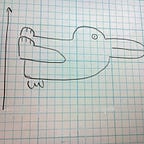Antenna Arrays And Python - Introduction
I’ve been delving into the world of antenna arrays recently. The thing that really helped me understand the background theory was writing some Python scripts covering some design calculations. I wanted to detail some of these to help finalise my thoughts and to possibly assist anyone looking at this kind of thing.
There’s a lot of theory and terminology around antennas that could make some of the details unclear. If anyones interested and struggling let me know and I’ll do my best to help or at least point you in the right direction of further reading.
This ended up becoming a bit of a mini-series and to help navigation you can see the complete list below:
- Part 1 Introduction
- Part 2 Square Patch Element
- Part 3 Plotting with Pyplot
- Part 4 Calculating Directivity
- Part 5 Patch Efficiency & Gain
- Part 6 The Array (finally!)
Antenna Array Overview
As a very simple overview an antenna array is a set of individual antennas which are connected together. Basically, it’s possible to design an array to be more sensitive in the desired direction than the individual antennas would be by themselves. When designed correctly the radio waves radiated by each individual antenna combine, adding together to enhance the power radiated in desired directions, and cancelling to reduce the power radiated in other directions. Due to reciprocity the same will also happen with radio waves being received.
Another useful function of array antennas can be electronic beam scanning. By phasing each antenna separately the beam of radio waves can be steered electronically to point instantly in any direction over a wide angle. This is most often referred to as a “phased array”.
Antenna Elements
The individual antennas in an array are often known as “elements”. The elements considered in most literature are microstrip patches but in theory an element can be any radiating antenna such as the dishes shown in the picture below.
In my next post I plan to cover the work done on a rectangular microstrip patch design that will then go on to function as an element in an array.
